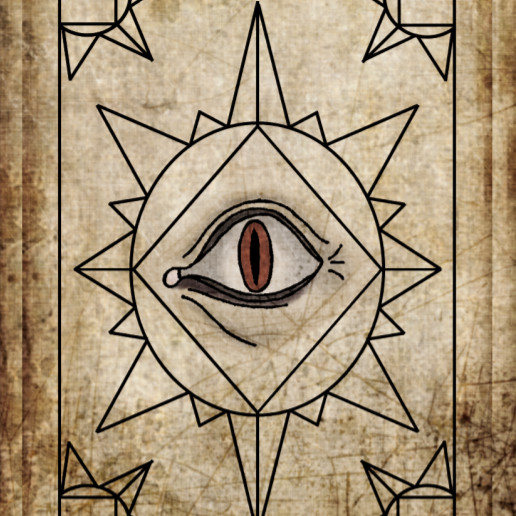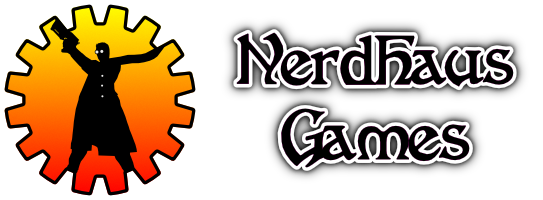Last week, I had the treat of sharing an rpg table with my college roommate for the first time. We have games together in other formats (our dining room table was never used for meals but permanently set for Necromunda), but this was the first time we played together. Normally I introduce first-time roleplayers with something straightforward (like Dread) or ridiculous (like Crash Pandas). I opted for straightforward and planned to run something out of the Harrop Collection but there’s the issue of how to do social distance right now within arm’s reach of a Jenga tower…
There are lots of options for running a game online. You have Discord servers, various video chat options, digital tables, and play-by-post. You could even dust off your typewriter and get started on a De Profundis campaign, but I’ve never had one make it more than two letters in, despite our best efforts [link]. But none of those do Jenga, and networked BoomBlox as a resolution mechanic feels cumbersome. Enter Grin.

Grin is a one page game from Arcana Games that uses playing cards to resolve actions. Whenever you need to determine success, pull between one and three cards at the Master’s discretion, based on difficulty/complications. If any of them come up face cards, draw that many more. If any come up as an Ace, keep that card and discard it in the future to not have to draw. If you draw the single Joker in the deck, you die. If it’s all numbered cards, you succeed.
That’s the game. There’s more in there about pulling cards out for smaller parties, or removing cards for players once they’ve died, but the game really is about that simple. It maps very well onto Dread’s Jenga pulls, but can do it remotely. I made a few modifications and want to share a few ideas about further integrating it into how my table plays, but you could just take this recommendation and go play Dread/Grin right now.
If you stayed, thanks! I kept heroic sacrifices, where they skip drawing all together, get what they want, and die in the process. Normally, you announce this by knocking the tower over, which feels suitably dramatic. For Grin, you would shuffle the deck now and remove the requisite four cards per death. Grin says these four cards immediately go to the dead player to act as Aces they can spend to help or hinder the survivors. That feels like a lot and could mean that no one draws cards for a little while after someone dies. I was going to reduce it to one, maybe two cards so that the post-shuffle world isn’t a foregone conclusion for a little bit (or a griefer’s paradise, but I don’t play with jerks).
To handle the character questionnaires, I made each sheet its own Google Doc and shared them one at a time with the players. (Be smarter than me and change your default on each document to “Anyone with the link can edit” before you distribute the links) Players can write their answers into the doc, you can watch in real time if you want and use the chat feature to ask questions privately, and then copy answers into your GM cheat sheet so you don’t have to flip back and forth.
Also, because of the social distance aspect, we couldn’t share a deck and I didn’t want everyone drawing their own cards via webcam at home. I kept control of the deck and had my smartphone broadcasting a separate muted video feed next to my laptop, balanced on a box and just keeping the cards in frame. Before every draw, players had the option of asking me to cut the deck. This had the them feeling like they had some control instead of just watching it play out. Knowing we were doing this, I shuffled the Joker in regularly at the beginning of the session, not burying it in the bottom 20 cards. While this should have resulted in no difference in the odds of drawing the Joker, we did run the whole session down to only seven cards remaining. There were no deaths until a late-game heroic sacrifice was called to give everyone a chance to flee the mine while the gang leader buried a vampire. With a mountain.

I will be taking a look at Roll20 card deck features and try to determine if there’s a way to build some custom decks for the game after the first death OR you go round robin and have everyone in the fatal scene make a number of pulls like you do to seed the tower in Dread. If they pull the Joker during this process they die and the deck gets shuffled and now you remove cards for another death. I would announce which version you’re using beforehand.
A benefit of Grin over Dread is that it eliminates dexterity as a factor. If you love Jenga, have the hands of a surgeon, and like to hear blocks hit the table, there’s nothing like it. But for players with mobility and dexterity issues, players who are housebound but still want to Skype into games, and for people who just don’t care for their character’s survival coming down to friction and gravity, it’s a great fix. Once you port a couple of features over to blend both games, you get a very strong contender for online gaming that still ratchets up the tension and delivers on the uncertainty of your outcome.
